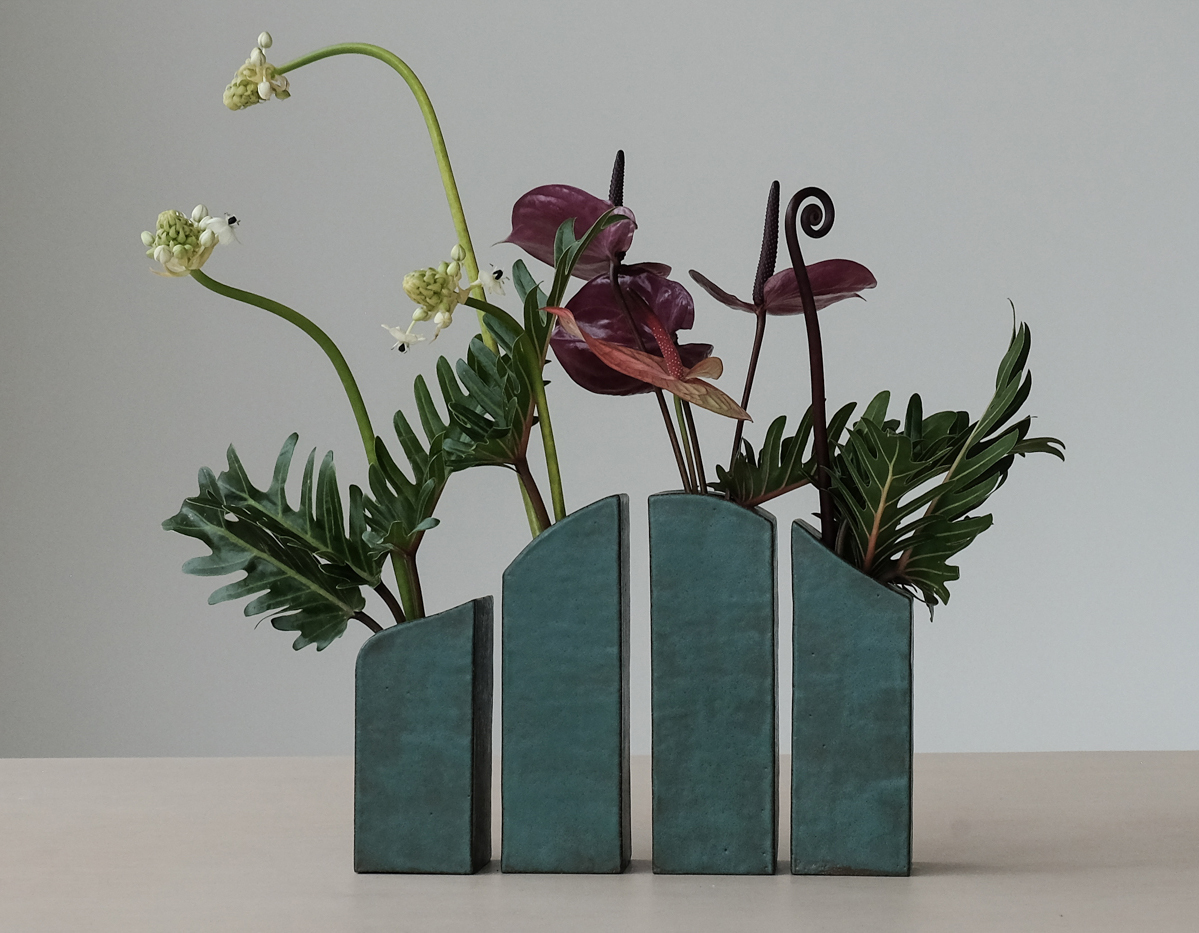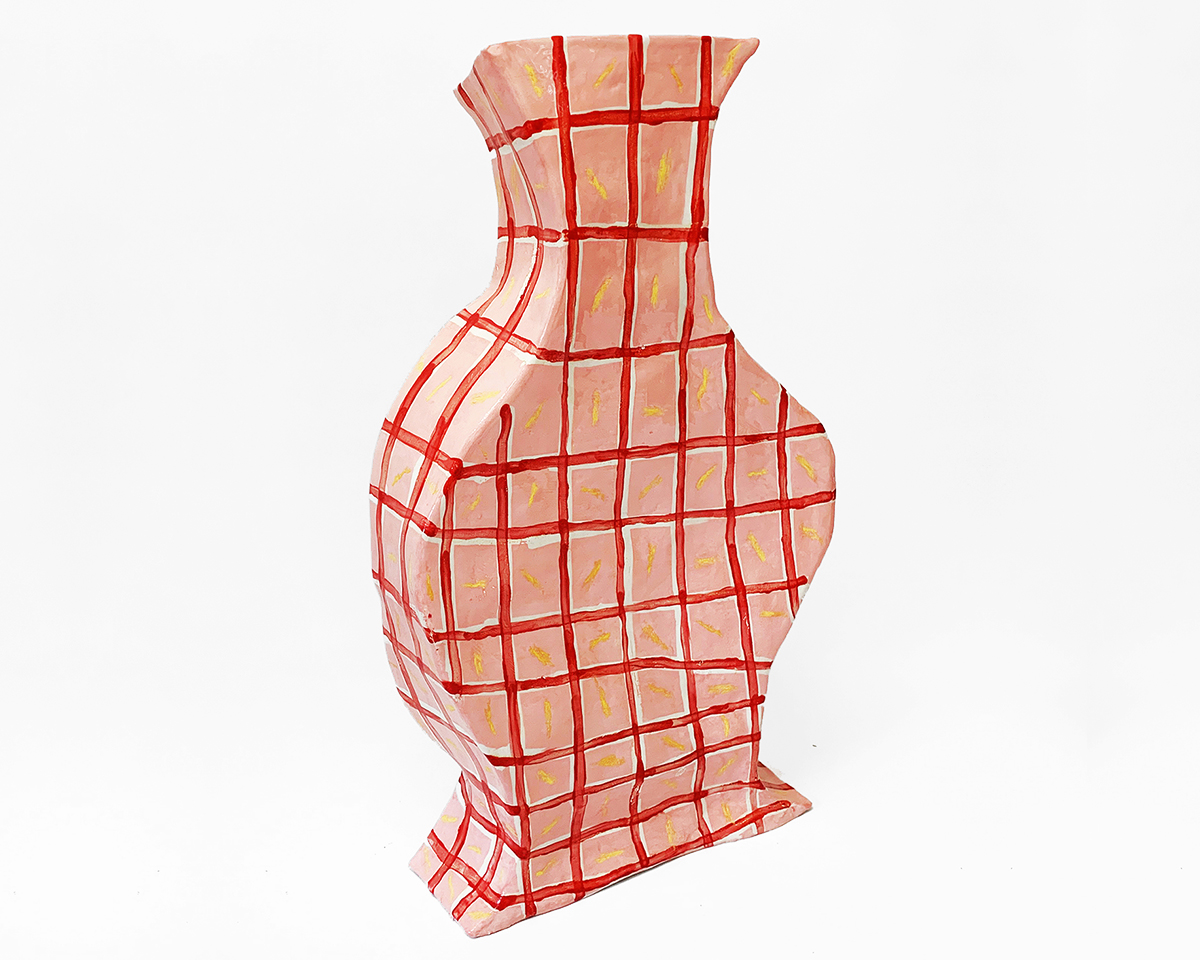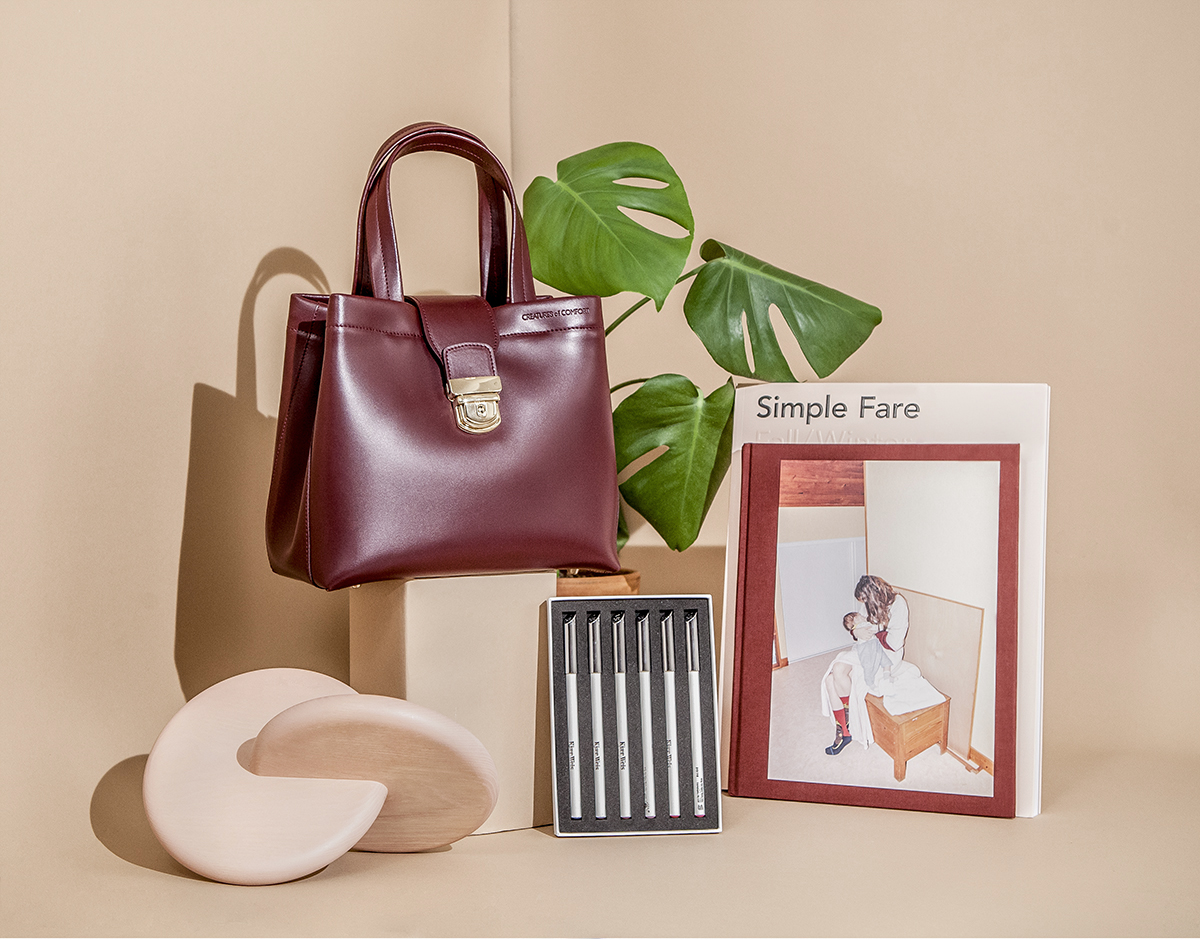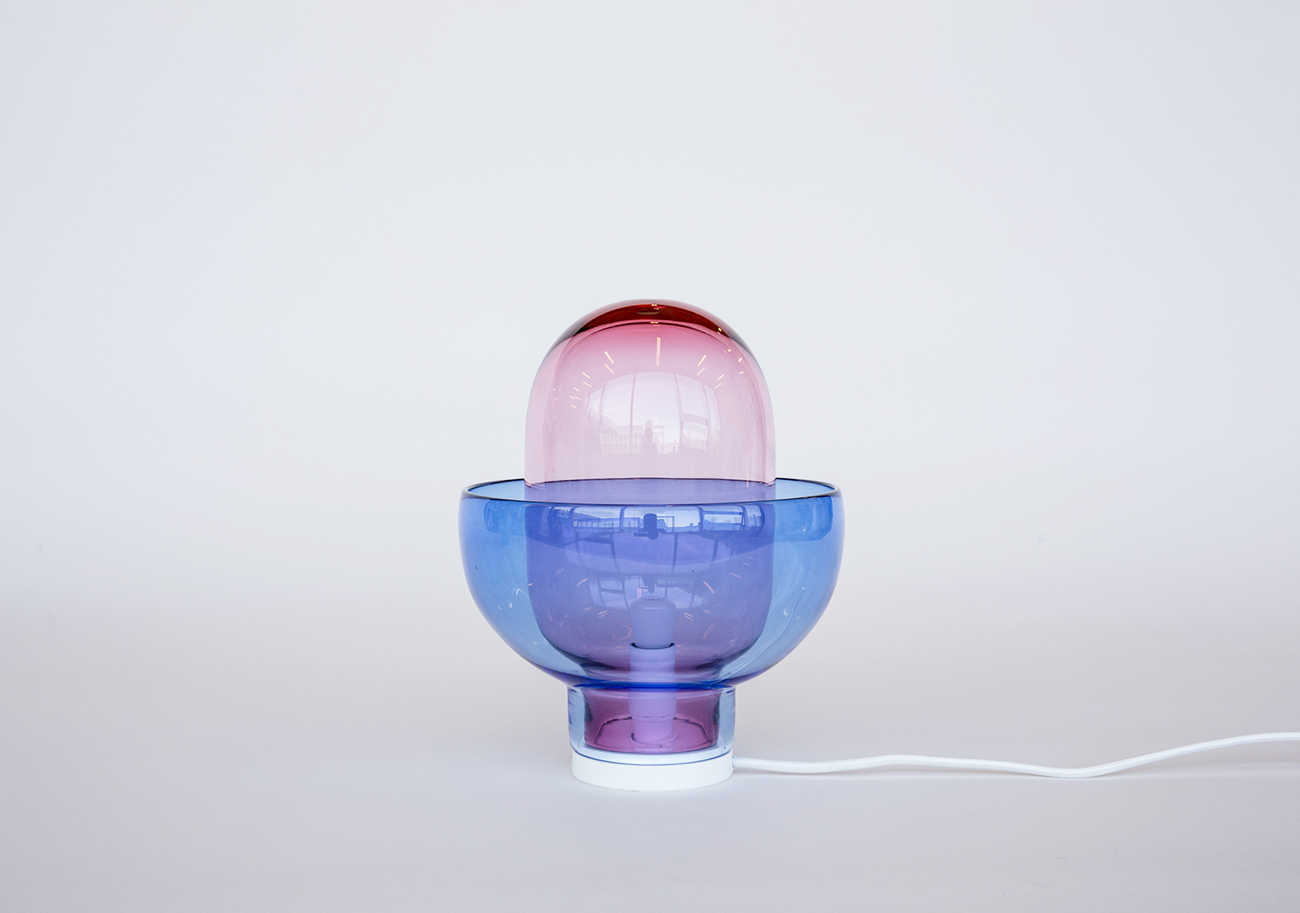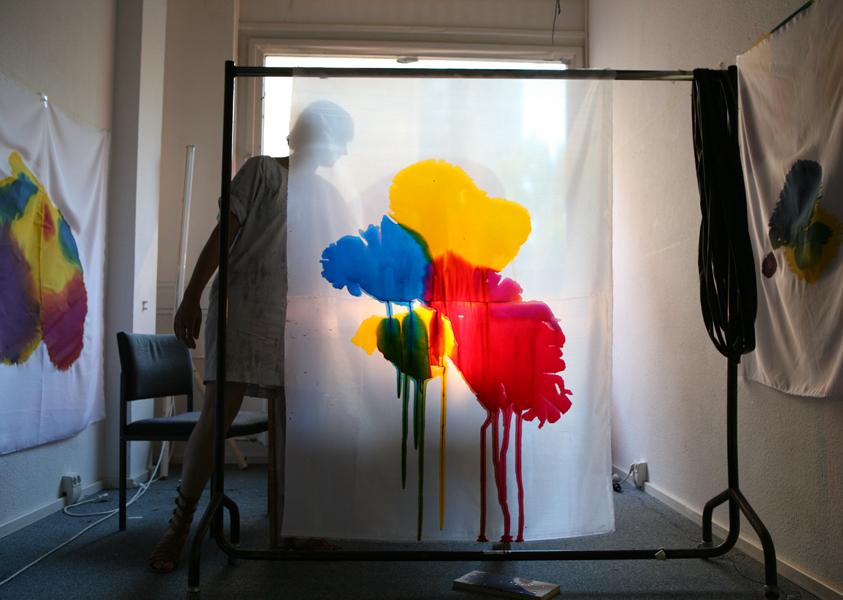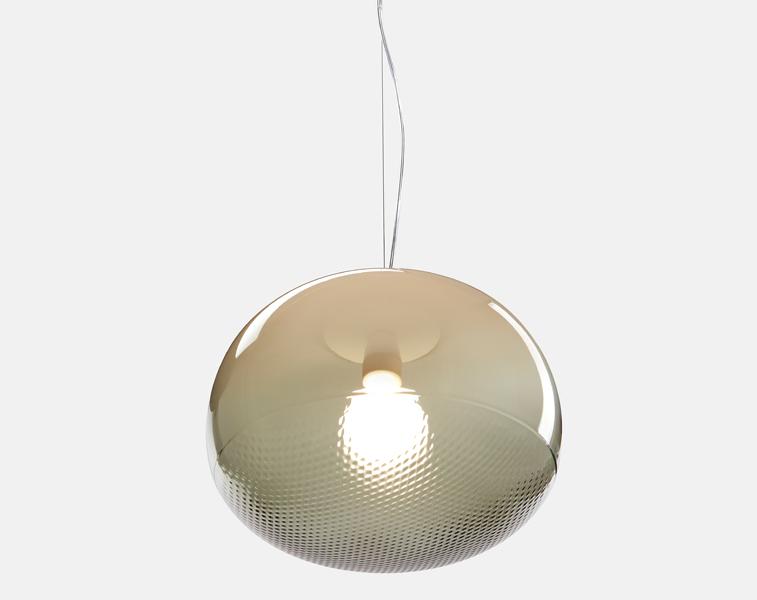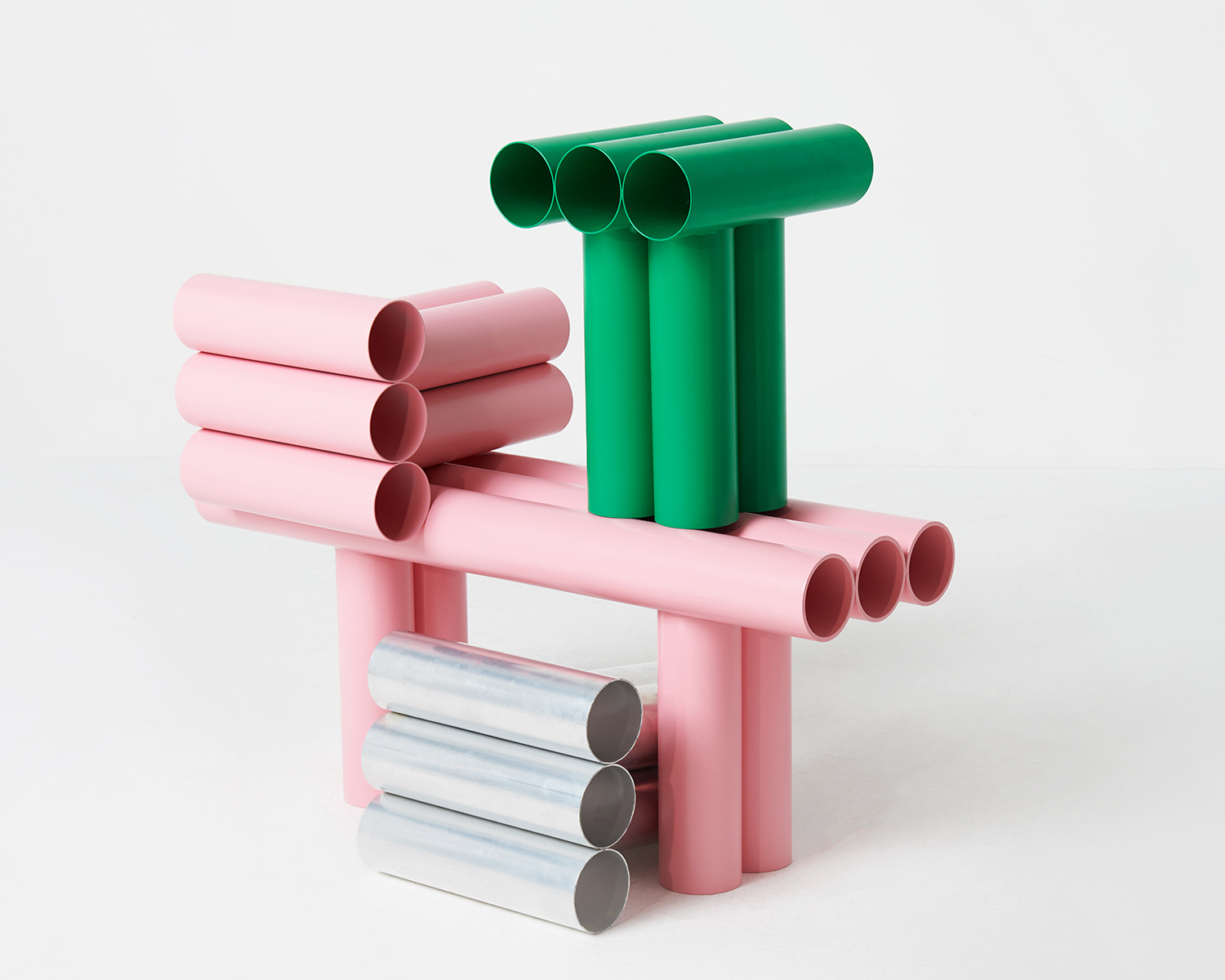
07.14.22
Q+A
Axel Chay Channels Man Ray Through His Erotic Bent Metal Designs
“Not a bit phallic, a lot phallic!” laughs French designer Axel Chay when I suggest his lamp slightly resembles a penis. Based on a 1920s sculpture by Surrealist artist Man Ray, the playful pink design — which I later found out is actually called Phallus — and a sconce shaped like a nipple are the most blatantly erotic and humorous of Chay’s designs. Others more subtly exude sensuality through their curves or elements entangled with one another, but are finished in bright greens, yellows, and blues so could also be interpreted in a completely different way.
